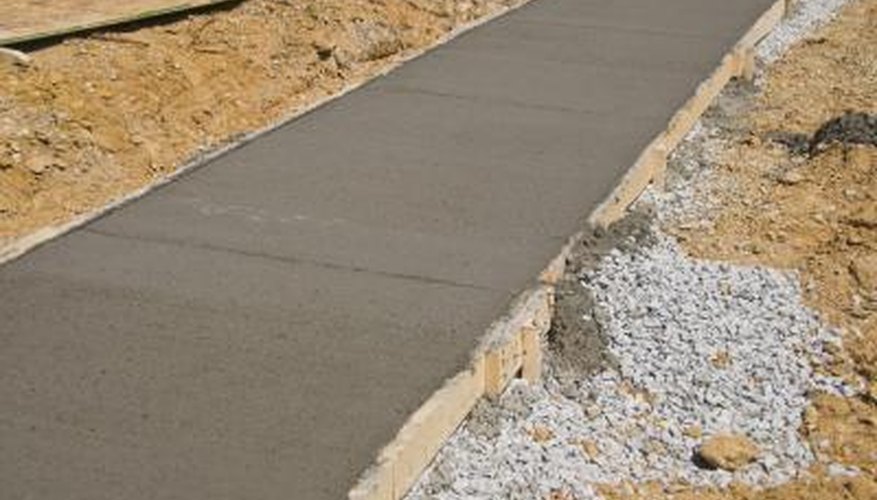Concrete is a durable, strong building material comprised of the binding agent cement and an aggregate, usually small or large pieces of gravel. In the concrete industry, crumbling and flaking of the surface or along an edge is also called spalling. Damaged concrete requires patching or replacement if the damage is widespread.
Freezing and Thawing
Concrete seems like a stable and permanent material, but it remains porous and will absorb water. When this water trapped inside the concrete freezes, it pushes the cement binder apart. This expansion, and the resulting contraction when the water melts again, causes crumbling. If you live in an area with winter temperatures low enough to freeze water, seal your concrete steps or walkway with a sealer once a year to keep water out.
- Concrete seems like a stable and permanent material, but it remains porous and will absorb water.
- When this water trapped inside the concrete freezes, it pushes the cement binder apart.
Minerals
Concrete requires an aggregate in the form of gravel. When the stone used for this gravel contains certain mineral deposits, these minerals leech out slowly and cause cracking and crumbling of the concrete. Pyrites are the main cause of this in residential concrete. Other minerals, including the silica and mica, also cause deterioration when present in high amounts. Modern concrete testing standards prevent these problems in new concrete, but older concrete construction may be susceptible to this issue.
- Concrete requires an aggregate in the form of gravel.
- Pyrites are the main cause of this in residential concrete.
De-icing Salt
A frost-covered concrete driveway becomes slick and dangerous to walk on. Sprinkling a little rock salt may encourage melting and give you traction, but it will also damage the surface of the concrete. Rock salt, or sodium chloride, leads to pitting and crumbling of the surface of concrete due to a chemical reaction. Using alternative de-icing crystals like magnesium chloride or potassium chloride prevents this from happening.
- A frost-covered concrete driveway becomes slick and dangerous to walk on.
- Sprinkling a little rock salt may encourage melting and give you traction, but it will also damage the surface of the concrete.
Too Much Water
Concrete comes in a dry form, either as bags of cement or ready to mix with the gravel already added. It begins to set as soon as you mix in water because the cement reacts chemically to moisture. If you add too much moisture during the mixing phase, the chemical bonds that create a strong and durable concrete surface will be weaker says the Portland Cement Association. Use only as much water as the mix's instructions indicate to prevent weak concrete that crumbles under pressure.
- Concrete comes in a dry form, either as bags of cement or ready to mix with the gravel already added.
- It begins to set as soon as you mix in water because the cement reacts chemically to moisture.
